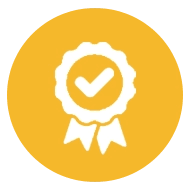Thinking 7 Generations Ahead: Let us change the patentability criteria

We at DexPatent celebrated World IP Day last week by visiting, giving talks and raising awareness about IP and Patents in universities and academic communities in India. During our talks one question that came up frequently is what is patentable. As you already know, the key criteria for an invention to be eligible for a patent includes novelty (should be new), inventive step (improvement over existing inventions) and industrial applicability (demonstrating a practical use). Industrial applicability here means the invention should be useful and should solve a problem.
During the discussion, when we explained how even a fidget spinner is a patented idea, there was a question from the audience, what problem does a fidget spinner really solve. Those who understand kids, know what problem it solves. It helps in creatively engaging children. It does solve a real problem. But can you think of any critical or serious problems that fidget spinners can create? Seemingly no.
But there are many inventions, that solved one problem, created another larger or complex problem.
Take for example plastics. Plastics though solved the problem of storing conveniently food, water and beverages, created another problem of polluting rivers and oceans. The nearly unsolvable problem of plastic pollution in the oceans is highlighted by Great Pacific Garbage Patch which refers to a vortex of plastic waste and debris broken down into small particles in the ocean. Most of the single use plastic that end up in water bodies including oceans are not biodegradable. They do not wear down but simply break into tinier and tinier pieces and often, working their way into the human food chain. A study found we consume a credit card size of plastic every week i.e., 5 grams a week.
So inventions do solve a problem but they can create a bigger, complex problem as in the case of plastics.
Take for example inventions relating mobile phones. Mobile phone together with social media has been a having great impact of mental health of children, college going students and even adults. Studies have pointed out progressive global decline in the mental health of each younger generation in internet enabled populations. Mobile phone and social media, though solve basic problem of communication and connecting with people, is bringing in a bigger and more complex problem.
Other examples include
- Nuclear power: Provides clean energy but raises safety concerns and creates radioactive waste.
- Social media: Connects people globally but can lead to addiction, misinformation, and social comparison issues.
- Artificial intelligence: Has vast potential but raises ethical concerns about job displacement, bias, and misuse of powerful algorithms.

– Angeline Boulley, author
So when we think about inventions, we need to think beyond the immediate problem it solves. How might a given invention affect other aspects of life, the environment, or society as a whole? For example, a new, super-efficient fertilizer might solve hunger issues, but could it also lead to water pollution?
We need to Look for unintended consequences. Imagine how people might use the invention in unexpected ways. Could it have negative applications or downsides? Self-driving cars might decrease accidents, but could they create job losses for truck drivers or ethical dilemmas in accident scenarios?
There is saying in India which goes like this – when do something, think about 7 generations. By asking “what problems can this invention create for next 7 generations?” we can identify inventions that might harm the environment or society in the long run, hindering a sustainable future.
Just like we can’t predict the exact needs of our great-grandchildren, unforeseen problems can arise from inventions. This questioning approach helps us anticipate potential issues before they become major problems for future generations.
Let us come back to patents and patentability criteria. It would be a good idea to consider “what problems the invention may cause” as part of the patent examination process. Patent examiners can potentially identify unintended negative consequences that the inventor might have missed. This could be environmental impact, safety hazards, or potential for misuse.
By requiring inventors to consider potential problems, the patent system could encourage a more responsible approach to innovation. This could lead to inventions with fewer downsides and a focus on long-term benefits. The patent process typically focuses on novelty, non-obviousness and usefulness. Adding “potential problems” element could create a more balanced evaluation, ensuring inventions offer a clear benefit that outweighs any potential future risks.
There could be also issues with this approach. It will be challenging to objectively assess potential ‘future’ problems, especially for inventions with long-term implications. There could be delay or even blocking of inventions. Enforcement issues could come up as well.
Despite the challenges, we should consider potential problems an invention may create during patent examination. Because patents and IP exist for the benefit of the world and people – living today and tomorrow.












0 Comments